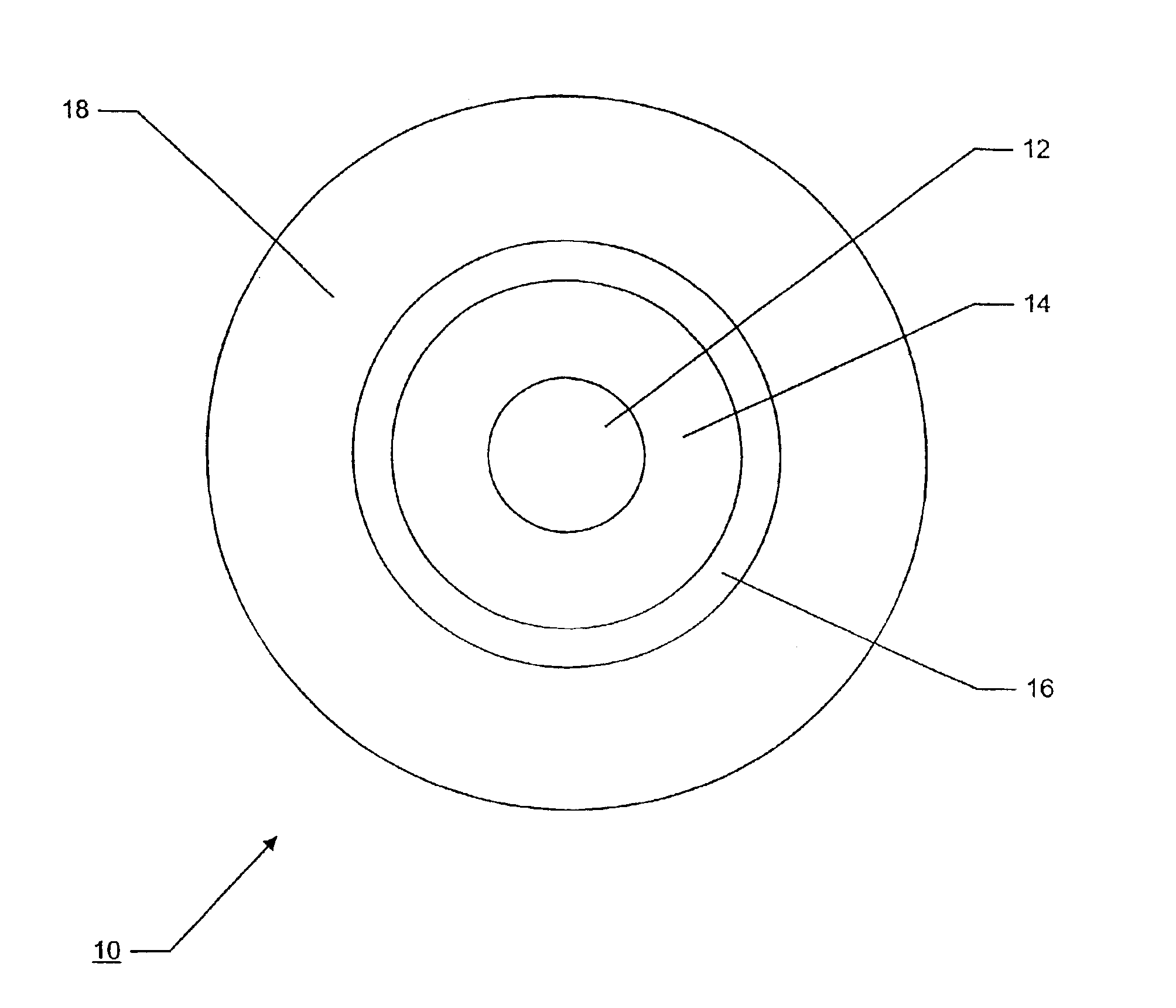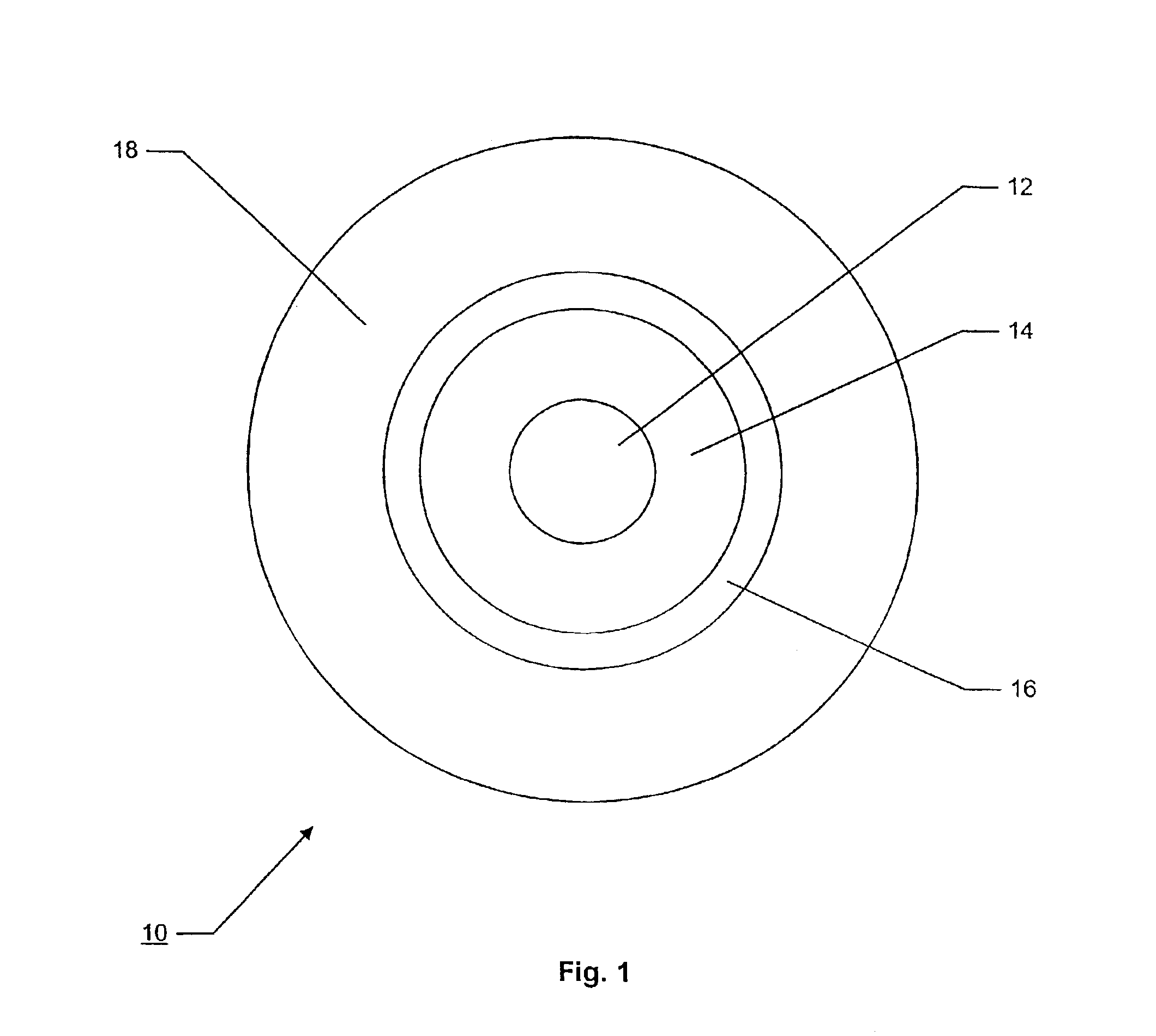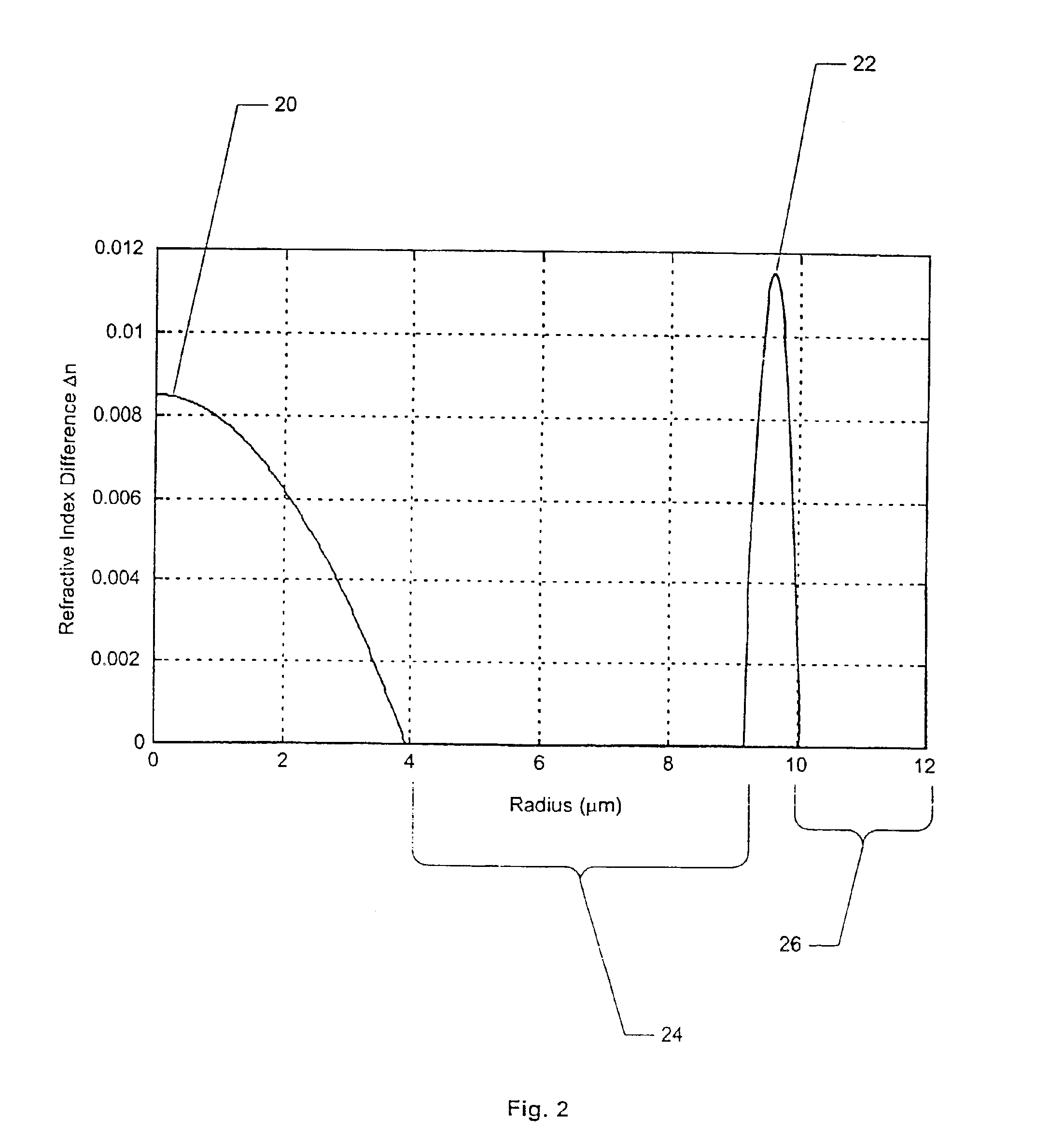Optical fiber having low non-linearity for WDM transmission
a technology of optical fiber and non-linearity, applied in the direction of fiber transmission, transmission, lasers, etc., can solve the problems of large effective area fibers, unable to achieve optimum decrease in , prone to increase fiber loss of refractive index-modifying dopants, so as to increase the refractive index, increase the non-linearity of glass, and reduce the effect o
- Summary
- Abstract
- Description
- Claims
- Application Information
AI Technical Summary
Benefits of technology
Problems solved by technology
Method used
Image
Examples
first embodiment
[0052]FIG. 2 illustrates a refractive index profile across the radius of fiber 10 for the present invention. As generally shown, fiber 10 has two refractive index peaks 20 and 22 positioned respectively within inner core 12 and second layer 16. First layer 14, which is disposed radially between inner core 12 and second layer 16, provides a refractive index dip relative to its two adjacent layers 12 and 16. Consequently, the combination of inner core 12, first layer 14, and second layer 16 generally provides an optical fiber profile having a segmented core with an outer layer having the highest index of refraction within the cross-section-of the fiber.
[0053]As shown in FIG. 2, according to a first embodiment of the present invention, inner core 12 has a radius r1 that is about 3.6 μm to 4.2 μm, but preferably is about 3.9 μm. Between the center of the fiber and the radial position at 3.9 μm, inner core 12 includes a refractive-index-increasing dopant such as GeO2 or the like that pro...
second embodiment
[0081]FIG. 9 illustrates the present invention for optical fiber 10 of FIG. 1. In this second embodiment, inner core 12 has a radius r1 that is about 2.3 μm to 3.6 μm, but preferably is about 2.77 μm. Between the center of the fiber and the radial position at 2.77 μm, inner core 12 includes one or more refractive-index-increasing dopants, such as GeO2 or the like, that produce a peak index of refraction at or near the axial center of fiber 10 and a minimum for the inner core at its outer radius. At the peak, the index of refraction Δn1 for inner core 12 in the second embodiment is about 0.010 to about 0.012, and preferably is about 0.0113. As with the first embodiment, the concentration of the refractive-index-modifying dopant in the core 12 decreases from the center to the outer radius at about 2.77 μm in a manner to produce a profile having a profile α of about 1.4 to about 3.0, but preferably of about 2.42. First glass layer 14 in the second embodiment has a substantially constan...
third embodiment
[0101]Second Layer Refractive Index Difference Δn3=0.0129. Of course, variations from these optimal structural values do not alter their general inventive features. Fiber 10 according to the present invention advantageously obtains the following optimal optical characteristics (at a wavelength of 1550 nm):
[0102]Dispersion=3.4 ps / nm / km
[0103]Dispersion Slope=0.11 ps / nm2 / km
[0104]Mode Field Diameter=9.95 μm
[0105]Effective Area=90 μm2
[0106]γ=1.00 W−1km−1. The third embodiment for fiber 10 having the above-listed optical characteristics provides acceptable conditions for the transmission in both solitons and non-soliton WDM systems.
[0107]FIG. 11 illustrates a fourth refractive index profile for optical fiber 10 that generates optical characteristics of nonzero positive dispersion. The physical characteristics of the inventive fiber of FIG. 11 include a radius r1 for inner core 12 of about 3.2 μm, an index of refraction profile α for inner core 12 of about 2.9, a maximum refractive index ...
PUM
 Login to View More
Login to View More Abstract
Description
Claims
Application Information
 Login to View More
Login to View More - R&D
- Intellectual Property
- Life Sciences
- Materials
- Tech Scout
- Unparalleled Data Quality
- Higher Quality Content
- 60% Fewer Hallucinations
Browse by: Latest US Patents, China's latest patents, Technical Efficacy Thesaurus, Application Domain, Technology Topic, Popular Technical Reports.
© 2025 PatSnap. All rights reserved.Legal|Privacy policy|Modern Slavery Act Transparency Statement|Sitemap|About US| Contact US: help@patsnap.com



